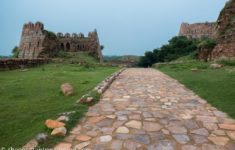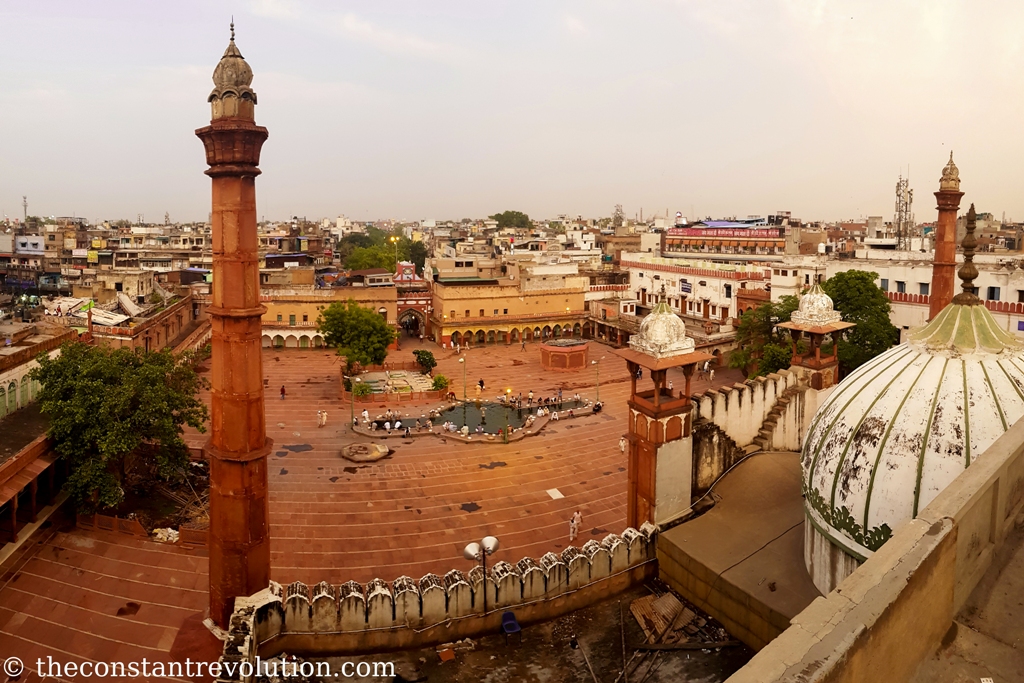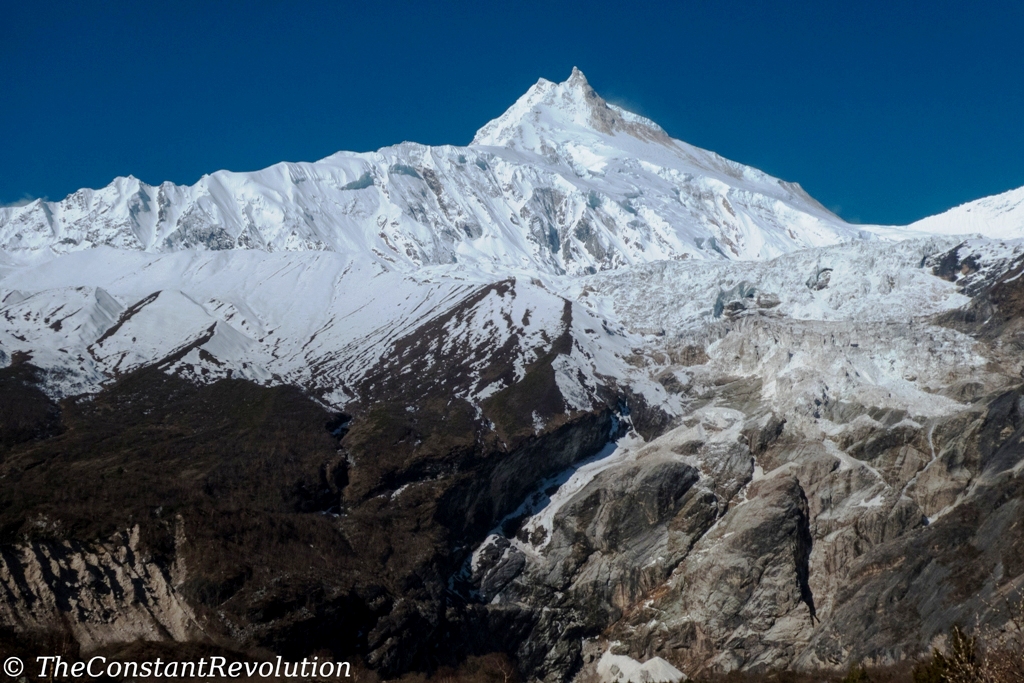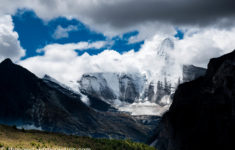Two months in Delhi is enough time to visit many touristic and less touristic sites, and learn something about the city’s vibe. So, here is a list of places worth visiting, or maybe not. All I can guarantee is an honest review, from my point of view that is, presented in an elegantly random order.
My long stay in Delhi had different reasons behind it, but in between my commitments, I managed to walk around many neighbourhoods and parks, taste a lot of street food, check hang-out areas, markets, and cultural sites.
Note, I often put together more than one site under a single heading, when they are nearby or part of the same neighbourhood. Also, keep in mind that I was there during the months of July and August, so whatever you do, it’s going to be very hot and humid, if not moonsonic.
Alright, without any further ado, I get right to it:
1) QUICK DETOUR: CITY FOREST IN SAKET
This “forest” in South Delhi is not too big and can be crossed in about one hour. There are lots of squirrels, peacocks, and other birds around. It’s mostly frequented by some people fast pacing, in the evening time when it’s not too hot any more, and by a few joggers. A quick relaxing detour out of the traffic if you happen to be in the area.
2) HAUZ KHAZ: NIGHTLIFE, PARKS, AND A NICE VIBE
Hauz Khas Village is a popular nightlife spot, with many restaurants, coffee and dancing bars, in South Delhi. It’s basically only a couple of streets, and all the hang out places are cramped one next to the other. It’s definitely worth a shot if you are up for some fun. I can suggest The Social, where I have been a couple of times. It doesn’t look much from the outside, but when you get in, it’s a modern music bar, organised on three floors and with a nice terrace overlooking the lake.
Besides the Village, there are some other blocks in the neighbourhood where to find the kind of independent bars or restaurants for a fancy coffee or a creative meal, and with a nice vibe.
Just on the side of the village, there’s the entrance to the Deer Park, and District Park, which is adjacent.
Deer Park
Inside Deer Park there are actually many spotted deer, like in a big cage. It’s a big space and all, but to me, these animals should not be there, they should be free and wild. I felt kind of sorry watching this beautiful deer, which I saw lively and kicking in the Terai (Bardia National Park), be used to the presence of humans, lazying around, and getting fat and apathetic. There’s also another cage with rabbits and guinea pigs, for some unknown reasons.

More interesting are the ruins of a Mausoleum tucked at the centre of the park, Bagh-I-Alam Ka Gumbad, built during the Lodhi-era, around 1500, and the adjacent Mosque walls, from the same era. These are quite well-preserved ruins, for those who are interested in this kind of things, and they add quite some charm to the site.
District park
On the other side, that of District Park, you will be able to walk around an emerald green lake, built to be a water reservoir for the royalty, with a small island in the middle and many naked branches rising from underneath its waters. From afar, it is quite nice to watch, and good for some photos. When you get closer though, you realize the water is actually kind of dirty, the green comes from a kind of solid algae-ish substance that covers completely the lake.

The gardens all around are nice and clean, and it is a pleasant walk to take. At one point, you will get to the Fort Complex, where a lot of youngsters hang out. The complex is made up of a number of monuments such as Mosques, Madras, Pavillions, and Tombs which were built in different time periods by several emperors.
The access to the fort is from Hauz Khas Village, and it’s free. It’s a little spot of tranquillity and greenery, with a lot of historic charm. Definitely worth a visit.
3) A TEMPLE FOR ALL RELIGIONS: THE LOTUS
This is one of the most iconic places of Delhi. The Lotus Temple has been built by the followers of Bahà’ì Faith, a religion that teaches the essential unity and equality of all people and of religions. For this reason, also their Houses of Worship are open to all religions, and that’s what the Lotus Temple represents.

There are no recognizable religious icons inside the temple, and rituals are not permitted. Instead, readings and chants from any religion take place regularly. It’s a vast, beautiful and absolute silent space for everyone to say their prayers, accompanied by the echoes of many chirping birds that made their nests in the high structures of the temple.
The lotus flower, on the other hand, is a symbol of beauty, purity, awakening and rebirth in many cultures, as it rises from muddy and still waters with the sunlight, and goes back into darkness in the night. The revolution of life, and death.
4) THE GARDEN OF FIVE SENSES
Frankly speaking, I believe this famous park in South Delhi is a little overrated. First of all, there’s an entry fee, for no real reasons. Second, there’s an extra fee if you take your camera along, which is just ridiculous. I mean they are both very cheap, but it doesn’t make any sense.

The garden itself is aesthetically nice, with lots of flowers and many different types of plants. However, the feeling is that maintenance can’t keep up with entropy, and soon the place will go towards an inevitable demise. Probably there were once working lights, and fountains, but not any more.
The concept of the Garden is a little unclear. I first assumed it was built around some kind of symbolism from ancient cultures from the five continents, but following the website of Delhi Tourism the concept is simply that of “a space for public leisure, that is supposed to awake a sensory response and sensitivity towards the environment.” Well, mission failed from this perspective. With this Maya’s Arc, and the Greek amphitheatre, and a vague resemblance to Mughal gardens etc… the garden feels mostly fake, a bad attempt of copying styles from other places and times.

Last but not least, like in every other park in Delhi, there’s a lot of young couples looking for privacy. However, while elsewhere it doesn’t matter, here the thing is particularly annoying because the garden is actually kind of small, and it is supposed to be a place to visit for its aesthetics, to be discovered. Instead, every turn you take it feels like you are interrupting something.
What can I say, if you are in the area go and peak in, but with low expectations
5) BOREDOM AT CENTRAL PARK
Right in the middle of the city, at the crossroad of three metro lines, and at the centre of a big area organised in concentric circles, lays Central Park. Unfortunately, despite the important name, which inspires comparisons with some other famous parks in the world, this one is pretty small, pretty dirty, pretty crowded, pretty noisy, and pretty boring.

The internal circle, the closest to the park, basically hosts a shopping area, with some touristic bars and restaurants. There’s nothing to see there. Unless you have to go shopping for a new pair of jeans, I suggest you employ your time better.
Connaught Place
The most external circle, the furthest away from the park, hosts some of the best clubs, pubs and cocktails bars in the city. Indeed, Connaught Place is the name of the neighbourhood expanding south-west from Central Park, and considered a good spot for nightlife. I must say I did not hang out much there, so I don’t have a name to suggest.
6) RAJ GHAT – GHANDI SMRITI AND MUSEUM

The Raj Ghat, in the North-East part of Delhi, is a memorial to Mahatma Ghandi, and is situated in a big green Park, with long avenues and wide meadows. The black marble is settled where Gandhi cremation took place, while on the other side an eternal flame burns. It’s totally worth to go and visit both this place and the museum not far from it, I would suggest the museum first. In fact, I have published a separated article with some extra thoughts about this visit.
7) UNMISSABLE OLD DELHI, AND THE RED FORT
Unmissable in my opinion, a tour of Old Delhi means a visit to sacred places of all main religions, lots of markets, great street food, decadent mansions from the Mughal era, and a great poet’s last residence. Too much to be summarized here. But do not fret, I have written it all down in another post 😉

I strongly suggest you look for a guide and take a day tour for this, as the place is really chaotic, and many of its secrets are hidden away. With a guide you’ll get the best out of it.
The Red Fort
The tour to Old Delhi can easily be paired with a visit to the iconic Red Fort, symbol of the Mughal empire, which stands just at the edges of the neighbourhood. To be honest, I didn’t find this to be a must. I mean, it’s fine, if you wish to spend 500 INR entry fee to check the structure of the fort. Probably, and here was my mistake, it’s worth getting the headset with explanations about what you are seeing, otherwise you are left quite in the blind. Unless you are an expert in Mughal architecture of course. All in all, it’s a matter of preference. I guess places like Old Delhi are just more charming to me than a visit to any historic monument.
8) THE NORMALITY OF KALKAJI MARKET AND SURROUNDINGS
There’s absolutely nothing special about Kalkaji market, in south-east Delhi, and that’s why I believe it’s worth a visit. It’s just a regular place with no tourists, and local food and shops; an example of Delhi’s daily life.

I suggest you take a stroll in the neighbourhood. That is how I ended up walking for a whole day and accidentally creating a random tour that goes from Kalkaji market road to a Shiva Temple nearby, then through Greater Kailash I, then through Jahanpanah city forest, to end up with a visit to Tughlaqabad Fort.
It goes without saying, I have written it all down here 🙂
9) JAHANPANAH CITY FOREST
India is one of those places where it’s absolutely forbidden to take the right to reach a point, but if you take the left to reach the same point, no one says anything. That’s how I ended up entering the Jahanpanah city forest during closing time and walk for a couple of hours in it on my own, pretty cool and peaceful.

This is probably the nicest forest-like park I visited in Delhi. It’s big enough to muffle, almost silence the city noise and ideal for a long walk or to go jogging. Like everywhere else, there’s a lot of birds, peacocks, and squirrels.
10) THIRD CITY OF DELHI: TUGHLAQABAD FORT RUINS
Perhaps it is because I reached this place a little by chance, while I wasn’t planning at all to visit it, or perhaps it is because ruins are more charming, especially if plunged in lush green, or perhaps it was the lack of tourists. Be it as it may, I appreciated this site more than the Red Fort (see above).

Tughlaqabad Fort, also called the third city of Delhi, was built at the beginning of the fourteenth century to be the capital of the Muslim Tughlaq dynasty. It was built on quite a big area, but only a small portion can be visited today. It’s a one to two hours visit top, but a nice and charming site. A mausoleum with the tomb of Ghiyasuddin Tughlaq himself, the founder of the dynasty, can also be visited opposite the entrance of the ruins, with the same ticket, which for tourists amount to 300 INR.
Unfortunately, the fact that for Indians the entrance is only 25 INR makes it easy for young couples to enter the ruins site only to look for some privacy, just like it happens in many parks. In a historical site is just weirder.
11) STEPPING INTO NIZAMUDDIN DARGAH
Definitely one of the best sites I visited (featured photo). A Dargah is a mausoleum, in this case, that of one of the Sufi saints, Khwaja Nizamuddin Auliya, who also gives the name at the whole neighbourhood. It is a site of prayer and pilgrimage for many devotees. It has become a famous tourists destination because of the Sufi chanting and devotional music which was played here, mostly on Thursdays.
Unfortunately, I have been told these sessions have been stopped, because of the presence of too many non-devotees, who had become a disturbing element. Pity, but understandable. It is still worth to pay a visit though. I went on a very warm afternoon and I was the only foreigner around. The site is relatively small, but it was very crowded. There were men playing music, people talking, praying, eating, and a lot of passage. A colourfully chaotic place.

I must confess I was a little annoyed by my own ignorance. I didn’t know much about Sufism, let alone about the particular rituals or traditions I was looking at. I would have loved to have someone explaining everything to me, it would have been much more interesting. I looked up for some stuff on the internet afterwards, but it’s not the same thing, and some details are hard to find. Perhaps it’s possible to take some tours, I didn’t look for it.
In order to reach the Dargah you need to walk into narrow market streets, again many colours around. Many shop owners will ask you to leave the shoes with them, they become more insisting the more you approach the Margah. Just wait until when you arrive at the entrance though, otherwise you might end up walking a good stretch bare-feet, and it isn’t exactly spick and span. The food around the market is pretty nice. Unlike other parts of Delhi, there are many meat options, which you can tell by the several butcheries around. Still, vegetarian is always possible in India.

Be ready as well for quite a big number of beggars on the street and inside the Dargah, more than usual. There’s no need to pay to enter, but some men ask for money for charity, they say. They have books where they want you to write your name and commit to giving some money for this or that reason. I have no idea whether they are legitimate or not, it’s possible they really are locals collecting charity money. Still, I refused and went in to visit the site. I always prefer not to give money on the street. As usual, if you desire to do some charity, a good rule is to make a donation to a trusted organization.
12) KHAN MARKET
This place is considered a nice hangout area and nightlife spot. Frankly speaking, it’s just a bunch of shops and a few fancy restaurants. But I must say I was there during the day, and I was looking for something different, like a street food place or something like that. Perhaps Khan Market is different and more fun overnight.
13) FOR THE HIPSTER IN YOU: LANE NUMBER 3 (SAKET)
In Saiyad ul Ajaib village, between Saket metro station and the Garden of Five Senses, look for Lane Number 3, go to the end of it, and look on your right side. You will find yourself in a kind of hidden enclave, closed and clean, with several small independent restaurants, a couple of vintage shops, and probably the best coffee roaster in town, Blue Tokai. I guarantee, only for the coffee it’s worth a visit to Lane Number 3.
Delhi doesn’t have much of a hipster scene, but this tiny corner of the city gets really close to it in both style and vibe.
14) HAMAYUN’S TOMB

A friend of mine once told me that if a place is touristic there must be a good reason. Often, this is true. It’s the case for example with Hamayun’s Tomb, one of the most iconic sites to visit in Delhi, and UNESCO heritage since 1993. It’s the mausoleum of Mughal Emperor Hamayun, and it is said to have inspired the construction of its bigger brother, the Taj Mahal, which is considered the zenith of Mughal architecture. It isn’t a must, but I found the visit interesting, it’s a beautiful site. The ticket is 600 INR.
15) JAMA MASJID MOSQUE
The Jama Masjid is one of the biggest mosques in India, and that’s pretty much all there is to it. Unless you are a devotee and you go there for your prayers of course. I didn’t find the construction particularly impressive. You pay 300 INR to enter, walk around the square, take your photo, and go. So, up to you.

More interesting, and I believe I am repeating myself here, is to walk around the streets of Old Delhi to reach the mosque. I find that is more of an experience. In the end, I went three times to Old Delhi. Inevitably, I come out of it depleted of all my energies. Despite so, it’s always a mix of excitement and surprises observing, even feeling, the chaotic patterns of all those people, means of transport, expressions, smells, and take some shots with my camera. It’s an unbearably human place.
SOME RANDOM STUFF ABOUT DELHI
Market, market, or market
Everything is a market. This is not necessarily street food, or a place with some kind of folkloristic charm, as I would have thought. A market can also be a simple commercial road, or a cluster of very normal, or even up-class shops, restaurants and clubs. So, before you decide to go visit a market, just make sure it is what you are looking for.
Metro
Delhi’s metro is great, clean, cheap, and air-conditioned. Definitely the best way to move around the city.
Rain
When it rains, everything is flooded, and everything is blocked on the roads. Bring a book along, especially in monsoon season, and be patient.
Driving
There are no rules whatsoever, but somehow it works. It’s just not something you can explain to yourself, let alone others. On more than one occasion taxi drivers would just go against the flow of traffic, on the opposite lane, just to take a shortcut. No one would blink an eye. The first time you get scared; the second you get tense; the third you keep looking at Instagram.
Honking
Honking is a permanent background sound. Most of the time is just a signal to say that you are there, but it changes absolutely nothing to whatever unfortunate traffic situation you are in. I saw people honking to the nothingness. It’s become like breathing, a necessary thing.
Cutting the line
Indians have this habit of nonchalantly cutting lines, as though it was the most natural thing. Particularly if you leave a 20 cm to 30 cm space between yourself and the person in front of you, that is considered free, unused space, and immediately filled with a new presence. Now, as an Italian, I wasn’t very impressed by this. I’d go as far as to say Indians have still much to learn about line cutting, Italians are much more cunning, and stubborn. In most of the cases, you just need to point it out or even look at the person that just cut the line with an intense expression, and they will realize it and let you go first 😉
Long stays
If you have to stay in Delhi for a long time, for whatever reason, I would recommend staying in South Delhi. Mostly the cool areas, where the action is, are Hauz Khas, Greater Kailash I and II, friends colony, some parts of Saket and Greenpark. Probably some other neighbourhood adjacent to the ones mentioned. I stayed in Sainik Farm, Neb Sarai. This is a very quiet and green area, with big villas and gardens, and tucked in a maze of small roads. It’s exclusively residential. For me it was perfect, outside the traffic of the city, silent and relaxing. However, it is not here that you get to taste Delhi’s vibe. So, it’s up to what are your needs.

Viva the transparency! There are affiliate links in this article. This means if you click on a link and end up buying (or booking) through those websites, I’ll get a small commission, at no extra cost to you. This helps me maintain the blog, and continue to provide (hopefully) useful travel information. I advertise only products I have tested and sites I use myself!






